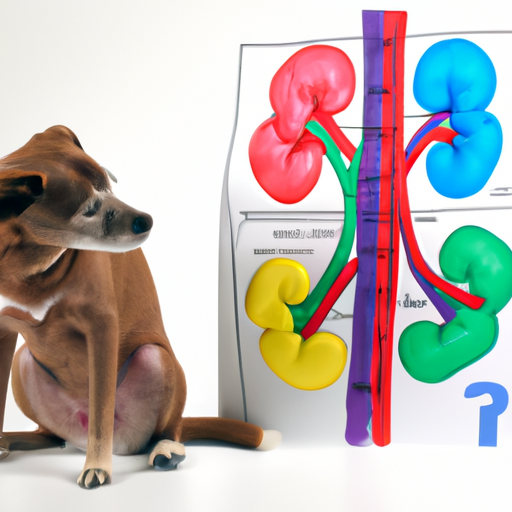As your furry friend ages, health issues such as kidney failure can become a growing concern. One marker veterinarians use to identify kidney problems is creatinine levels. As a responsible pet owner, it’s crucial to understand the warning signs and crucial indicators of kidney failure in dogs, like abnormal creatinine levels.
Table of Contents
- What is Creatinine?
- Normal Creatinine Levels in Dogs
- Increased Creatinine Levels and Kidney Failure
- Diagnosis and Treatment of High Creatinine Levels
- Frequently Asked Questions
Key Takeaways
- Creatinine is a waste product produced by the muscles and expelled by the kidneys.
- Normal creatinine levels for dogs range between 0.6 to 1.2 mg/dL.
- Elevated creatinine levels could indicate kidney failure, among other possible conditions.
- Diagnosis and treatment involve blood tests, urine tests, and possibly dietary changes, medication, or more serious interventions.
What is Creatinine?
Creatinine is a waste product that’s created through the normal wear and tear of the muscles in the body. This waste product is eliminated from the body through the kidneys. When the kidneys are functioning correctly, they filter out creatinine and other waste products effectively. When they’re not, however, these waste products can build up, leading to potential health risks. One of the most common conditions associated with high creatinine levels in dogs is kidney (renal) failure.
Normal Creatinine Levels in Dogs
On average, normal creatinine levels in dogs range between 0.6 to 1.2 mg/dL. However, these values can vary somewhat depending on the dog’s size, breed, age, and overall health condition. It’s important to have regular vet check-ups to ensure that your dog’s creatinine and other health markers are within the healthy range. The website OneTopDog offers a wealth of resources on dog health, including tips on how to maintain good kidney health in dogs.
Increased Creatinine Levels and Kidney Failure
If your dog’s creatinine levels are above the normal range, this could be an indication of kidney disease or failure. These elevated levels suggest that the kidneys aren’t effectively filtering creatinine from the blood. In addition to kidney issues, other conditions like dehydration, muscle damage, or certain medications can also lead to increased creatinine levels.
Early signs of kidney issues in dogs can be subtle, but may include increased thirst, frequent urination, loss of appetite, and lethargy. If you notice any of these symptoms, it’s important to consult with your vet immediately. This guide on understanding kidney disease in dogs can provide more information about the signs and symptoms to watch for.
Diagnosis and Treatment of High Creatinine Levels
To diagnose high creatinine levels, your vet will likely perform a blood test. This may be followed by a urine test to assess kidney function. If kidney disease is diagnosed, treatment will depend on the severity of the condition. This could include dietary changes, medication, fluid therapy, or in more serious cases, dialysis or kidney transplant.
There are several ways to manage high creatinine levels in dogs. Dietary changes often involve reducing protein intake and increasing the intake of water to help flush the kidneys. Medications may be used to control symptoms and slow the progression of kidney disease. In more severe cases, hospitalization for intravenous fluid therapy may be necessary. Your vet will guide you through the best treatment plan for your pet’s specific needs.
This article on managing kidney disease in dogs provides a deeper understanding of the steps involved in managing this condition.
Frequently Asked Questions
1. What are the symptoms of kidney failure in dogs?
Some common symptoms include increased thirst and urination, loss of appetite, weight loss, and lethargy.
2. How is kidney failure diagnosed?
Kidney failure is usually diagnosed through blood and urine tests.
3. Can a dog live with high creatinine levels?
Yes, but it requires careful management and regular vet check-ups.
4. How can I lower my dog’s creatinine levels?
This usually involves dietary changes, increased hydration, and medication.
5. Can diet affect creatinine levels in dogs?
Yes, a diet high in protein can increase creatinine levels.
In conclusion, understanding your dog’s creatinine levels can be a vital tool in detecting early signs of kidney disease. Regular vet visits for blood and urine tests can help ensure your furry friend remains healthy for years to come. Always remember that early detection can make a significant difference in the outcome of many health conditions, including kidney disease. Stay informed, stay vigilant, and your pet will thank you.
For more resources on dog health, check out OneTopDog’s collection of articles.



